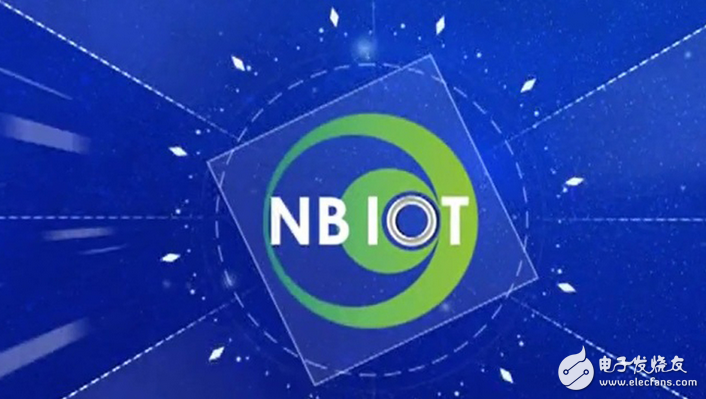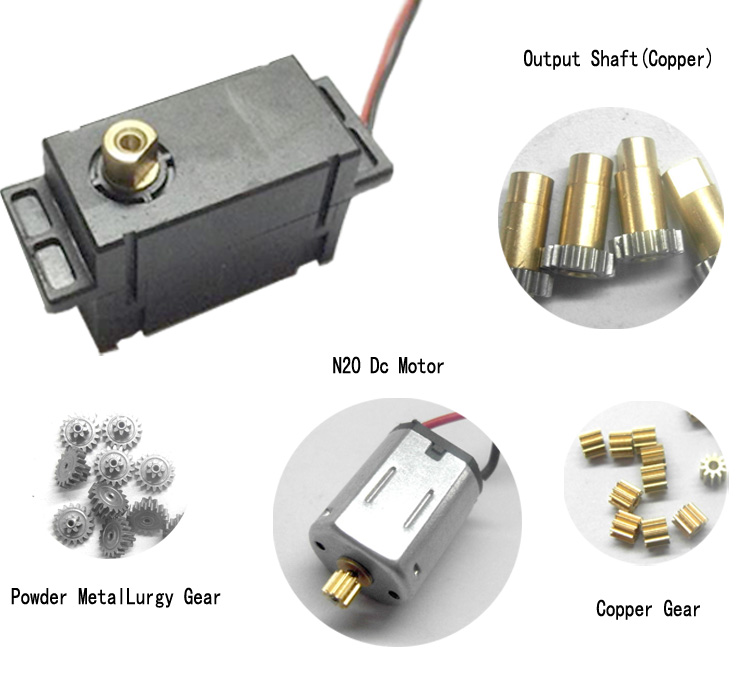A long "tail" of the Internet of Things will be pulled longer by NB-IoT, LoRa, low-power wide-area networks, and we need highly standardized and data services to achieve long tail operations.
As a typical feature of the network economy, the long tail effect provides a better perspective for the development of the Internet and mobile Internet industries. In the Internet of Things era, the integration of the Internet of Things and the national economy has made the long tail effect even more Obviously. In my opinion, with the commercialization of low-power wide-area networks such as NB-IoT and LoRaWan, the “long tail†part is being continuously stretched, bringing intelligent transformation to a large number of terminals. opportunity.

The diversified IoT world, the long tail effect is more prominent
Technology industry practitioners must be familiar with the "long tail effect". In 2004, Chris Anderson, editor-in-chief of Silicon Valley's well-known magazine "Connected", first proposed the "long tail theory": the protruding part from the middle of the normal distribution curve is called " "head"; the relatively flat part of the two sides is called "tail". From the perspective of people's needs, most of the demand is concentrated in the head, while the demand distributed in the tail is personalized, scattered and small demand, and this Partially differentiated, small amounts of demand form a long "tail" on the demand curve.
The long tail effect is more prominent in industries with a network economy. Our well-known examples include Google advertising for ultra-low prices for mass SMEs, and sales of a large number of non-selling books by Amazon to 50% of total revenue. Undoubtedly, the characteristics of the Internet of the Internet economy are also very obvious, that is, the value of the entire network increases with the increase in the number of access terminals. So why is the long tail effect in the Internet of Things industry more prominent? We can look at it from the perspective of terminal and application ecology.
From the perspective of the terminal, the terminals of the Internet of Things show very obvious diversified features, forming a large number of personalized "tail" IoT terminal forms. In the era of mobile Internet, the mobile Internet faced terminals were mass-produced mobile phones and tablets. In the Internet of Things era, we could not find terminals of the same order as mobile phones. After the equipments of various industries access the network, they become "smart interconnection products", but the terminals in different industries are different. Although there are some homogenized terminals due to the characteristics of some industries, they cannot be called compared with the future 10 billion-level networked devices. For high volume terminals. Liu Gang, general manager of Intel China's online business department, once said, "How to use long tail theory to support intelligent hardware innovation? The article pointed out that the long tail of the Internet of Things/Intelligent Hardware actually represents a big market opportunity. It seems that the number of each field is not large, but the long tail is added together, and the total market capacity and market opportunities are actually very large. . The approximate long tail state can be seen from the following picture:
The diversification of terminals has formed a diversified demand for IoT applications and is a more diversified demand pattern than the mobile Internet. In the development of mobile Internet, people can generate rich applications on batch mobile phones and tablet terminals, forming a very typical long tail form; while the diversity of terminals in the development of Internet of Things will certainly give birth to more rich applications than mobile Internet. It also makes the application part of the long tail more abundant.
In summary, the number of terminals accessing the network has increased and diversified, forming a long tail form of the terminal; applications running on diverse terminals are more abundant, further extending the long tail portion of the Internet of Things application.
Connect more fragmented applications, low-power wide-area networks stretch long tails
When low-power wide-area network technologies such as NB-IoT and LoRa are gradually commercialized, the shortcomings of the IoT communication layer are complemented, making device access more convenient, and the direct impact is more diversified terminals, allowing the long tail part to further extend.
Why is the low-power wide-area network extending the long tail of the Internet of Things? After the low-power wide-area network is commercialized, it solves the data transmission problem of meter reading, sensor connection and other applications, and also allows a large number of unobtrusive devices to have access to the network, such as fire extinguishers in buildings, weather monitoring equipment in remote areas, The fire alarm equipment in the vast forests, such as the magnitude of these equipment is not large, but the data generated by it plays a huge role in people's production, life, scientific research and other activities. Therefore, from the perspective of the number of terminals, when the NB-IoT and LoRa networks are deployed, there are more types of terminals that can access the network, but most of the terminals are not of a large order, and the types are diversified and small-scale. This has led to a longer "tail" form of the IoT industry than before.
A large number of "insignificant" terminal access networks, extending the long tail portion of the terminal, have brought about a more fragmented application form, that is, a large variety of terminals, but each type is not large, each forming a different application. It can be said that the low-power wide-area network makes possible more fragmented applications, making the long tail effect more obvious.
Zero, the value of standardization and data services
The existence of the long tail effect, the operation of the long tail part has always been one of the focuses of people's attention. Most of the attention is focused on the “head†because the “head†can often bring in half the benefits; but if the “tail†group can be effectively integrated, the other half can be earned and the competition can be avoided. . In the Internet of Things market, the terminals and applications in the long tail part are scattered among all walks of life. How to “zero and complete†to achieve long tail management? For low-power wide-area networks, standardization and data services will bring value.
At present, there are hundreds of low-power wide-area network technologies arguing. Dr. Wu Shuangli is arguing over the end of low-power wide-area network technology. In the article, it is proposed that with reference to the mature WiFi development path, high standardization will be a necessary condition for the low-power wide-area network technology to win in commercial use. Faced with a large number of long-tailed terminals, in a highly standardized background, interconnection and intercommunication are easier to achieve. As a wide-area network, only a small number of technical standards will be eventually commercialized in the future, and commercial networks built with a small number of technical standards must also be complementary and interconnected, thus making long-tail terminals and applications possible.
When the extended long tail part is connected to the network, the connection value is only the primary value when the device accesses the network. Network as a service has become an important business model of the current low-power wide-area network solution vendors, and the solution vendors have end-to-end (End-to-cloud) service capabilities, if you further explore the value of these long-tail terminals and the data behind the application, and provide the corresponding services, it is a way to integrate the scattered terminals and applications, and also the operation of the long tail part of the Internet of Things.
Lock Motor product introduction:
Intelligent lock motor, also known as electronic locks, the product effectively combines the advantages of traditional electronic locks and electromagnetic lock overcame the electric lock too much noise, electromagnetic lock power shortage and the development of new products, and spiritual compared with electric control lock and magnetic locks, lock its performance more perfect, more obvious advantages.
Functions: it is widely used in various intelligent locks, such as Shared bicycle lock, fingerprint lock, glass lock, safe lock, hotel lock, family lock, inductive smart lock, etc
Features:Lock motor is based on micro precision reducer development, small intelligent micro precision reducer can do 10 mm in diameter, is widely used in safe, locks, smart locks, sensor intelligent lock;
This kind of motor has the characteristics of low noise, low energy consumption, small volume, light quality, high precision, large torque and durability
Method of use: the best stable in horizontal plane, installed on the lock motor output shaft parts, cannot use a hammer to knock, knock prone to press into the dc lock motor drive, may cause damage to internal components, and cannot be used in the case of blocked.

Operating temperature range:
lock motor should be used at a temperature of -10~60℃.
The figures stated in the catalog specifications are based on use at ordinary room temperature catalog specifications re based on use at ordinary room temperature (approximately20~25℃.
If a lock motor is used outside the prescribed temperature range,the grease on the gearhead area will become unable to function normally and the motor will become unable to start.Depending on the temperature conditions ,it may be possible to deal with them by changing the grease of the motor's parts.Please feel free to consult with us about this.
Storage temperature range:
lock motor should be stored ta a temperature of -15~65℃.
In case of storage outside this range,the grease on the gearhead area will become unable to function normally and the motor will become unable to start.
Service life:
The longevity of lock motor is greatly affected by the load conditions , the mode of operation,the environment of use ,etc.Therefore,it is necessary to check the conditions under which the product will actually be used .The following conditions will have a negative effect on longevity.Please consult with us should any of them apply.
â—Use with a load that exceeds the rated torque
â—Frequent starting
â—Momentary reversals of turning direction
â—Impact loads
â—Long-term continuous operation
â—Forced turning using the output shaft
â—Use in which the permitted overhang load or the permitted thrust load is exceeded
â—A pulse drive ,e.g.,a short break,counter electromotive force,PWM control
â—Use of a voltage that is nonstandard as regards the rated voltage
â—Use outside the prescribed temperature or relative-humidity range,or in a special environment.
â—Please consult with us about these or any other conditions of use that may apply,so that we can be sure that you select the most appropriate model.
when it come to volume production,we're a major player as well .each month,we rurn out 600000 units,all of which are compliant with the rohs directive.Have any questions or special needed, please contact us, we have the engineer group and best sales department to service to you
Looking forward to your inquiry. Welcome to our factory.

Lock Motor
Lock Motor,Intelligent Lock Motor,Smart Lock Motor,Fingerprint Lock Motor
Shenzhen Shunchang Motor Co., LTD. , https://www.scgearmotor.com